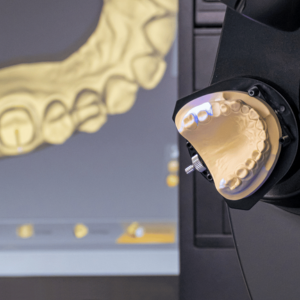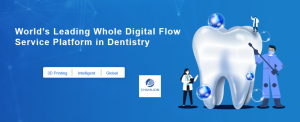In the dental industry, technological advancements have revolutionized the way laboratories operate, especially with the rise of CAD (Computer-Aided Design). As more laboratories seek to optimize productivity and reduce costs, outsourcing CAD design has become a popular solution. However, despite its benefits, many laboratories remain hesitant due to misconceptions that foster distrust or indecision.
Is outsourcing truly reliable? Will it affect the quality of the final product? This article debunks the most common myths about outsourcing CAD design and highlights why this option can be a strategic tool for modern dental laboratories.
1. Myth: “Outsourced designs are of lower quality than in-house work”
Reality:
The belief that outsourced designs are less precise or of lower quality than in-house designs stems from fear of the unknown. However, many CAD design providers are staffed by highly specialized teams who often have broader experience handling diverse clinical cases than a laboratory’s in-house technicians.
These providers typically use cutting-edge software like Exocad, 3Shape, or InLab, enabling them to create complex designs with incredible precision. For instance, in cases involving multiple implants, a specialized team can craft optimized designs that ensure a perfect fit, reducing the need for adjustments later.
Additionally, reputable providers implement strict quality control measures, reviewing each design before delivering it to the client. This ensures that the final products meet the exact specifications required by the laboratory and the dental professional.
2. Myth: “Outsourcing is more expensive than doing it in-house”
Reality:

At first glance, outsourcing may seem like a costly option. However, when analyzing the true costs associated with maintaining an in-house CAD design department, the economic advantages of outsourcing become clear.
Hidden costs of in-house design:
Equipment: Workstations for CAD design, 3D printers, and milling machines represent a significant upfront investment.
Software: Specialized software licenses come with substantial recurring costs.
Training: Training technicians to use these tools requires both time and financial resources.
Maintenance: Equipment requires regular upkeep and occasional replacements, adding further expenses.
By contrast, outsourcing allows laboratories to access advanced technologies without directly bearing these costs. Additionally, many providers offer flexible pricing plans based on workload, making it easier for laboratories of various sizes to manage their budgets.
3. Myth: “I’ll lose control over the process”
Reality:
Losing control over projects is a valid concern, but modern providers have developed tools and processes that ensure transparency and control.
For instance, many providers use digital platforms that allow laboratories to upload detailed specifications, track design progress in real time, and review designs before approving the final product. This not only ensures the design meets the client’s expectations but also enhances communication between both parties.
Moreover, working with a reliable partner fosters a collaborative relationship. Instead of simply delivering completed designs, a professional provider strives to understand the laboratory’s specific needs and tailor their approach to match preferences, from technical details to aesthetic styles.
4. Myth: “Turnaround times are longer with outsourcing”
Reality:
Another common fear is that outsourcing might slow down the laboratory’s workflow, particularly during periods of high demand. However, the reality is quite the opposite.
Specialized providers are designed to handle high workloads with quick turnaround times. Dedicated teams often work exclusively on CAD design, enabling them to deliver projects within tight deadlines.
Additionally, outsourcing is especially valuable during busy periods, as it allows laboratories to meet demand without compromising on quality or deadlines. For example, instead of delaying a case due to limited in-house capacity, a laboratory can rely on their external provider to ensure the project is completed on time, maintaining productivity and customer satisfaction.
5. Myth: “Finding a reliable provider is too difficult”
Reality:
While it’s true that not all providers deliver the same level of quality and service, there are effective ways to identify a reliable partner.
Key factors to consider:
Experience and expertise: Verify the provider’s track record in the dental industry and their experience with cases similar to those handled by your laboratory.
Portfolio: Request samples of previous designs to evaluate the quality and precision of their work.
References and testimonials: Speaking with other laboratories who work with the provider can offer valuable insights into their reliability.
Level of support: A good provider will be readily available to answer questions, make adjustments, and provide technical assistance when needed.
Choosing the right provider not only simplifies the process but also builds a trust-based relationship that benefits both parties in the long term.
6. Additional benefits of outsourcing CAD Design
Beyond debunking these myths, it’s worth highlighting additional advantages that outsourcing can offer:
Flexibility: Laboratories can handle fluctuations in workload without needing to hire additional staff.
Access to advanced technology: Providers are often at the forefront of the latest tools and trends.
Error reduction: Specialized teams have more experience identifying and correcting potential issues before they become problems.
Myths about outsourcing CAD design can prevent dental laboratories from taking advantage of valuable opportunities to improve efficiency, reduce costs, and enhance service quality. By partnering with a reliable provider, laboratories can eliminate these fears while unlocking a more agile and productive operation.
At WeCAD4You, we’re ready to be your strategic partner. Contact us today and discover how we can help transform your laboratory.



